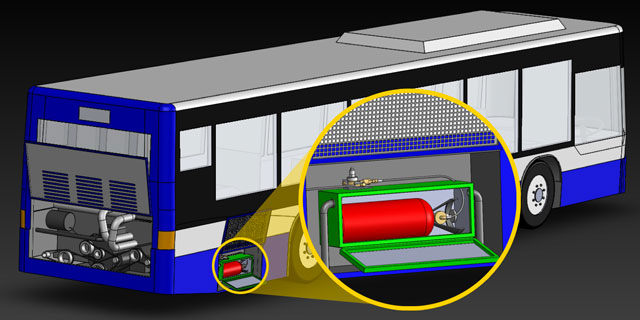Buses
Globo Hydro Power™ Products
Hydrogen to Power. The critical connection between future fuels and current transport challenges. 
Globo Hydro Power™ (GHP™) is a non-invasive fuel enhancement system which is installed into buses and coaches to upgrade traditional petrol and diesel engines into cost-saving, emissions- reducing, hydrogen hybrid engines.
GHP™ is suitable to upgrade the full range of buses, coaches and multiple passenger vehicles. Whether you’re involved in operating the school run, transporting tourists to idyllic locations, transferring passengers to/from transport connections or conveying personnel to/from company work sites, GHP™ can make your bus more efficient and economical to run.
GHP™ utilises cutting-edge scientific processes and discoveries to address the everyday challenges and cost pressures faced by bus and coach operators. Challenges to drive down operating costs, meet emissions compliance and compete in an increasingly demanding environment.
Not an alternative fuel and not an engine replacement. GHP™ is a fuel enhancement system which is installed in a wide range of vehicle engines to enable fossil fuels – petrol and diesel – to work together with hydrogen gas to reduce fuel costs and negative
READ MORE ABOUT HOW IT WORKS >>
- Easily installed upgrade for traditional petrol and diesel engines.
- Non-invasive process.
- Eliminates the need to replace the vehicle in order to achieve emissions reductions.
- Exchangeable cylinders of compressed hydrogen gas are conveniently fitted onto a vehicle becoming part of the vehicle’s operating system.
- Replacement cylinders readily available through Australian gas suppliers.
- GHP™ system is installed on-site at your depot in a few hours per vehicle to minimise downtime
- Installation by GHP™ authorised product installers – just contact us to arrange a suitable time.

Technical Details
The GHP™ fuel enhancement kit includes:
- Hydrogen Storage Cylinder securely installed into an appropriate area on the bus.
- Hydrogen Hosing feeds hydrogen gas from the storage cylinder into the engine bay of an internal combustion engine.
- Automotive Vapour Hosing feeds hydrogen gas from the hydrogen hosing into a solenoid valve.
- Solenoid Valve is connected to a motor vehicle’s accelerator cable, permitting hydrogen flow only on acceleration, thus shutting down gas flow when there is no acceleration.
- Hydrogen mixes with fuel to enhance fuel burn, creating a more efficient fuel economy.
- Up to 45% less negative greenhouse emissions are released into atmosphere via the exhaust system
Up to 40% savings in fuel consumption and Up to 45% reduction in negative greenhouse emissions.
Reduce your costs, improve your productivity, meet your compliance obligations and sharpen your competitive edge when bidding on lucrative contracts and tenders.
Be at the forefront of the transformation to a lower cost, lower emissions transport industry with GHP™ hydrogen hybrid powered vehicles in your fleet.
